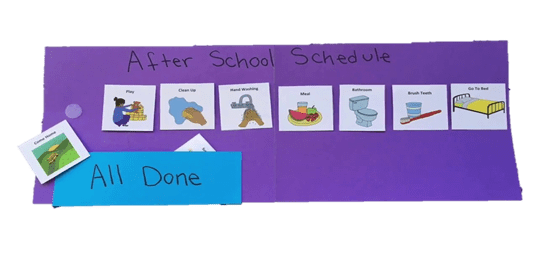 Strategies such as planned ignoring and behavior-specific praise are consequence-based interventions. In other words, those strategies come after the behavior has happened. What if we can address the behavior on the front end? This is when Antecedent interventions come into play. Antecedent interventions are designed to change the environment or setting events before a particular behavior occurs to increase the likelihood of positive behavior. Board-certified behavior analysts (BCBAs) often manipulate antecedents to set up opportunities to prompt more positive behavior.
Strategies such as planned ignoring and behavior-specific praise are consequence-based interventions. In other words, those strategies come after the behavior has happened. What if we can address the behavior on the front end? This is when Antecedent interventions come into play. Antecedent interventions are designed to change the environment or setting events before a particular behavior occurs to increase the likelihood of positive behavior. Board-certified behavior analysts (BCBAs) often manipulate antecedents to set up opportunities to prompt more positive behavior.
There are many common types of antecedent strategies:
Using clear and specific instructions: It is important to keep in mind that when you ask your child to do something, be as specific as you can. For example, instead of saying “Go clean up your room.”, “Pick up 3 pieces of clothing on your bedroom floor.” Having clear and specific instructions is not only easier for your child to comply but also your child knows what is being expected. Of course, you do not need to always be so specific with your instructions, but it is helpful when you start developing positive behavior.
Visuals: Research has shown that individuals who are diagnosed with autism spectrum disorder tend to process visual cues better than auditory ones. Using visual schedules to present clear expectations. They are similar to planners we use for school or work but instead of listing all the tasks for the day.
Offer choices: Giving choices is a powerful tool to increase compliance. Using clear and specific instructions might be enough for your child. However, if you have any problems with compliance, by adding choice, you will increase the impact. For example, you could say to your child “Please put on your green gloves or brown gloves, we are going outside.” By offering a choice, it will greatly increase the chance that your child puts something on right away.
The three antecedent strategies mentioned above are helpful tools to increase compliance and decrease unwanted behavior. It is more effective if you combine them with reinforcement strategies (e.g., behavior-specific praise, token economy).
Next week, we will discuss an effective tool: Home-based reinforcement program (HBRP) to manage your child’s behavior in school settings.

